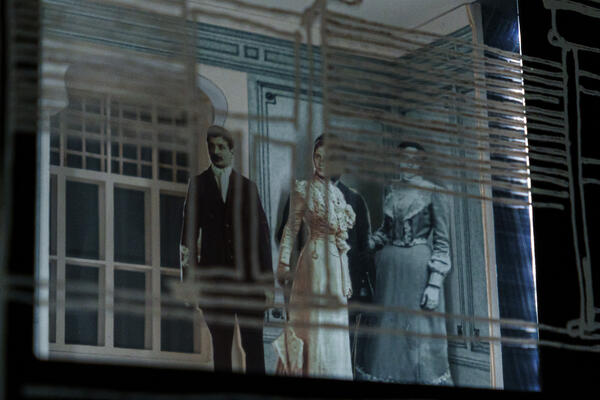The revenue house at 10 Bolshaya Sadovaya was built in 1903–1904. Edmund Stanislavovich Yuditsky was the chief architect. The facades were designed by Antonin Aristarkhovich Milkov.
The house consists of two buildings: a five-story front-facing building, which overlooks Bolshaya Sadovaya, and an internal four-story one.
The businessman who commissioned this house, and, accordingly, the owner of the building was a rich Karaite tobacco manufacturer, the owner of the “Dukat” (“Ducat”) factory, Ilya Davidovich Pigit. Residents of the house and the surrounding streets named house No. 10 on Bolshaya Sadovaya after the owner — Pigit’s house.
Ilya Pigit occupied a ten-room apartment No. 5 on the third floor of the building. The windows of the front rooms of the apartment, that is, the hall, dining room, study and living room, overlook Bolshaya Sadovaya, and the windows of the bedrooms overlook the courtyard. Apartment No. 5 was the most luxurious in the house: its walls were decorated with fine paintings and rich stucco, and there was oak parquet on the floor.
If one clicks on the button next to the sign “Apartment No. 5”, the light will turn on and the figures of Ilya Pigit and his wife Vera, as well as his nephews — David Sadukovich and Anna Sadukovna — will appear.
Ilya Pigit’s apartment is famous for the fact that in 1918 the revolutionary Fanny Efimovna Kaplan stayed in it. She was the one who, according to the official investigation, attempted to assassinate the chairman of the Council of People’s Commissars of the RSFSR, Vladimir Ilyich Lenin. Kaplan was friends with Left Socialist Revolutionary Anna Pigit.
After the Russian Revolution, the house was nationalized, and Pigit’s apartment, like all the other apartments in the house, was converted into a communal one. If one presses the upper button to the left of the sign “Apartment No. 5”, and then presses on the lower left lever, instead of the Pigit family, now appears a scene of a communal feast.
Mikhail Bulgakov lived through this “communal” part
of the building’s history. In the first half of the 1920s, 14 people were
registered in apartment No. 5 — slightly less than in Bulgakov’s communal
apartment in the neighboring building. In 1922, Mikhail Bulgakov wrote a story
about the life of Pigit’s house before and after the revolution. In the work,
“No. 13. — The Elpit Workers’ Commune Building”, a colossal fire begins in the
house, which spreads from apartment No. 50. In the novel “The Master and
Margarita” Bulgakov returned to this plot again,





